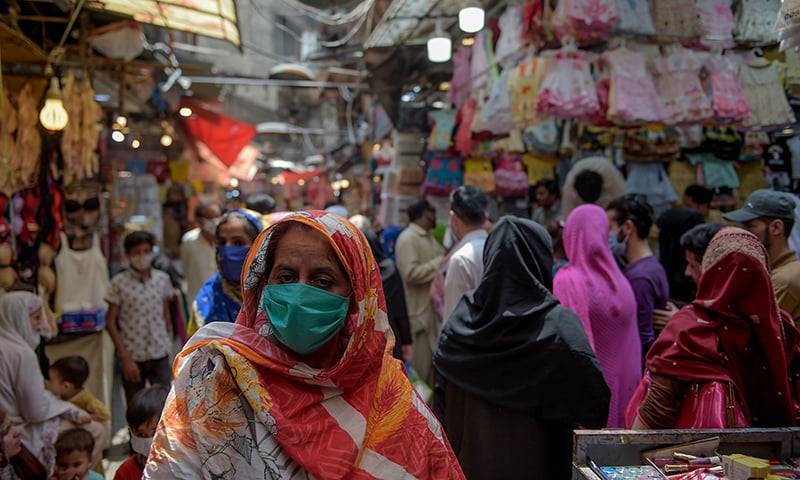
Researcher and activist Ammar Rashid said, after going through the available date and talking to people concerned, there were 'substantive reasons to believe that the drop in cases isn't just about reduced testing and there's some basis for cautious optimism'.
According to the data shared by him, he believed that the curve was flattening due to a change in people's behaviour among other factors.
In a series of tweets, the researcher said initially there was a decrease in infections due to reduction in tests, but 'after June 29, testing levels plateaued at around 22,500/day while new cases continued to fall'.
Have been going through the available covid-19 data from Pakistan & talking to people in MoH/WHO. It does appear that there are now substantive reasons to believe that the drop in cases isn't just about reduced testing and there's some basis for cautious optimism.
— Ammar Rashid ☭? #RedistributionNow (@AmmarRashidT) July 17, 2020
He said the positivity rate was also reduced to 11-12 per cent in July as compared to 22 per cent in June.
Secondly, the positivity rate (the proportion of covid-19 tests that are positive) has almost halved in a month, from averaging 22% in the first half of June to about 11-12% on average now. If tests were reducing amid a worsening pandemic, the positivity rate would be going up. pic.twitter.com/zl8dnRKNdf
— Ammar Rashid ☭? #RedistributionNow (@AmmarRashidT) July 17, 2020
He added that the effective reproduction number as per the Harvard School of Public Health was <1 in recent weeks.
Thirdly, Pakistan's effective Reproduction number - atleast independent calculations of it, since the govt hasn't released its own estimates - has also been consistently <1 in recent weeks. This estimate is from Harvard School of Public Health in Boston: https://t.co/gUEcU6DE7b pic.twitter.com/Qwe8DVL9rU
— Ammar Rashid ☭? #RedistributionNow (@AmmarRashidT) July 17, 2020
The hospitalisation rate and ventilator occupancy have also seen a downward trend in July, as only 3,000 patients were admitted to hospitals on July 17 as opposed to 7,500 on June 18, according to Ammar.
Fourth: as per NEOC data, hospitalization from covid-19 has more than halved over the past month, from about 7,500 patients admitted on June 18 to less than 3000 by yesterday. This is true across provinces but most drastic reduction is in Punjab (4356 to 1200). pic.twitter.com/D5aN5BUBP4
— Ammar Rashid ☭? #RedistributionNow (@AmmarRashidT) July 17, 2020
Whereas the decrease in ventilator occupancy suggested a decrease in severe infection, he said, adding that this could also be attributed to changes in clinical practices.
Fifth, ventilator occupancy numbers and rates have also gone down, suggesting a reduction in numbers of those with severe infections (though this also reflects changes in clinical practices & new treatments resulting in less ventilator use). pic.twitter.com/cWB67vIu4s
— Ammar Rashid ☭? #RedistributionNow (@AmmarRashidT) July 17, 2020
Giving reasons for the decrease in cases, Ammar said this could be due to 'a combination of a) mass behavioral change after Eid catastrophe; b) lockdowns in 400+ hotspots in June; c) increased mask use; & d) immunological variables we still know very little about'.
So what explains this fall? Don't have definitive answers, but sense it has to do with a combination of a) mass behavioral change after Eid catastrophe; b) lockdowns in 400+ hotspots in June; c) increased mask use; & d) immunological variables we still know very little about.
— Ammar Rashid ☭? #RedistributionNow (@AmmarRashidT) July 17, 2020
He also expressed concerns about the upcoming social events, like Eid and Muharram, which could 'unravel much of this progress'.
All in all, while there's reason for hope, don't think there's reason to declare victory yet. Covid-19 relies heavily on super-spreader events (as we saw on Eid) & 80% of its transmission comes from <20% of its cases. Eid-ul-Azha & Muharram could yet unravel much of this progress
— Ammar Rashid ☭? #RedistributionNow (@AmmarRashidT) July 17, 2020
